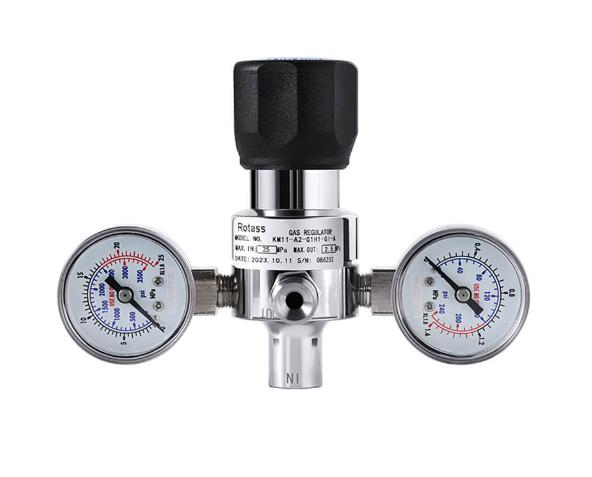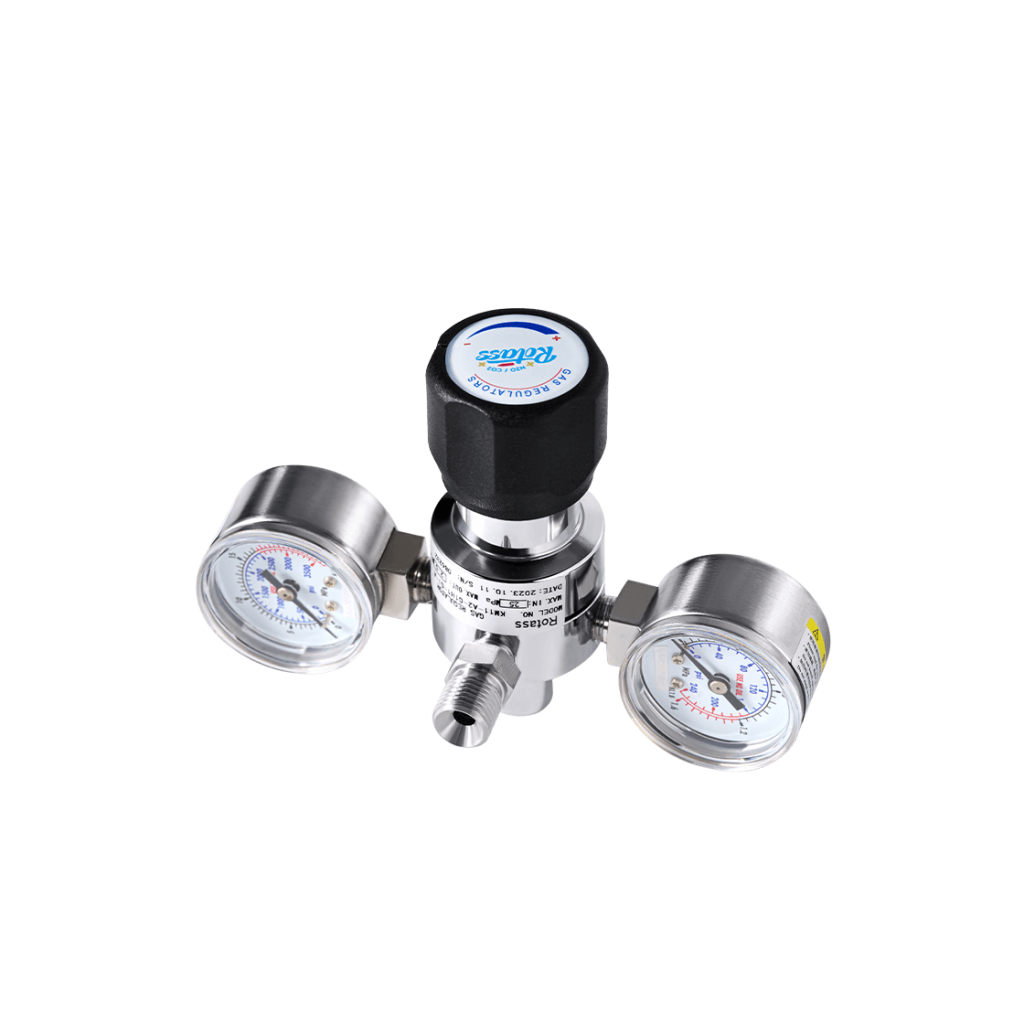2024 / 07 / 24
Cream Charger Pressure Regulator: Maintenance Guide
Behind the cream whipper, a critical component ensures flawless results: the pressure regulator. The pressure regulator, like any other mechanical part, can malfunction. Rotass will explain the common issues that can arise with your cream charger pressure regulator and provide you with the knowledge to identify and resolve them. We’ll also look at simple yet effective ways to determine whether your regulator requires maintenance, ensuring that your cream whipper continues to perform at its peak.

What Are the Common Failures and Countermeasures of the Cream Filler Pressure Regulator?
Common Faults of Cream Whipper Pressure Regulators
Whipped cream pressure regulators can experience a range of issues during use, including:
- Unstable pressure: This could be due to worn or damaged seals inside the cream charger pressure regulator, resulting in gas leaks.
- Pressure below standard: This could be due to the regulator’s spring becoming fatigued or improperly adjusted, necessitating a recalibration or part replacement.
- Excessive pressure: This could be due to the pressure regulator being set outside of its normal operating range, requiring recalibration.
- Leaks: This could be due to damaged connections or seals that require inspection, repair, or replacement.
Troubleshooting Measures
1. For unstable or below-standard pressure
- Inspect the pressure regulator seals, including gaskets and O-rings, and replace any damaged components.
- Adjust spring preload for stable pressure output.
2. For excessive pressure
- Recalibrate the cream charger pressure regulator to ensure it is set within the appropriate operating pressure range.
- Check for foreign object blockages, clean, and re-adjust.
3. For leaks
- Tighten any loose connections.
- Replace damaged seals to prevent leaks in connections.
Safety Precautions
When addressing these faults, adhere to the equipment manufacturer’s maintenance guidelines and safety instructions to ensure effective troubleshooting and operator safety. If the problem is complex or difficult to fix, please contact a professional technician for assistance. Here’s a more detailed explanation for every point:
- Unstable pressure: Unstable pressure can cause the whipped cream to have an inconsistent texture, ranging from foamy to runny. If the pressure regulator leaks, it can waste nitrous oxide cartridges. To inspect for leaks, apply soapy water to the connections and look for bubbles. If you find a leak, tighten the connections or replace the seals.
- Pressure below standard: If the pressure is too low, the whipped cream may not stiffen sufficiently. This could be due to a worn-out spring in the cream charger pressure regulator or a problem with its adjustment. To adjust the regulator, follow the manufacturer’s instructions.
- Excessive pressure: Excessive pressure may cause the whipped cream dispenser to explode. This is a serious safety hazard, so check the pressure regulator on a regular basis to ensure it is not set too high. To check the pressure, you will need a pressure gauge.
- Leaks: Leaks can cause the whipped cream dispenser to lose pressure, making it difficult to prepare whipped cream. They may also waste nitrous oxide cartridges. To inspect for leaks, apply soapy water to the connections and look for bubbles. If you find a leak, tighten the connections or replace the seals.
When working with whipped cream pressure regulators, make sure to follow the manufacturer’s safety instructions. This includes wearing safety glasses and gloves, working in well-ventilated conditions, and never exceeding the regulator’s maximum pressure rating.

How to Determine Whether the Cream Filler Pressure Regulator Needs Maintenance?
To determine whether your cream whipper pressure regulator requires repair, follow these inspection steps:
- Observe pressure readings: The pressure gauge or display gives a direct indication of the regulator’s performance. If the pressure reading consistently falls outside of the normal range, it indicates a problem with the regulator’s ability to maintain proper pressure.
- Listen for sounds and feel vibrations: An abnormal noise or vibration during operation may indicate a problem with an internal component. Grinding, rattling, or squealing sounds may indicate worn out gears, bearings, or seals. Excessive vibrations could indicate a loose or damaged component.
- Inspect for leaks: Leaks can cause pressure loss and reduce the whipper’s performance. Check all connections, including the gas cartridge holder, head assembly, and dispensing nozzle, for signs of gas leaks. To make it easier to identify leaks, use soapy water.
- Conduct performance testing: Regularly testing the whipper’s filling performance helps to identify potential problems early on. Fill the whipper with a known volume of liquid and transfer it to a measuring cup. Compare the dispensed volume to the original quantity. Significant discrepancies indicate a regulatory issue.
- Check manual adjustment: Manually adjusting the pressure lets you test the regulator’s responsiveness and control. If the adjustment screw becomes stuck, resists movement, or feels loose, it may need to be lubricated, cleaned, or replaced.
- Review maintenance records: Proper maintenance is critical for avoiding premature wear and tear. Examine the maintenance history to ensure that the regulator has received regular servicing, such as seal replacements and spring tension adjustments. Neglected maintenance can lead to more serious problems down the road.
Following these inspection procedures, as well as the manufacturer’s maintenance recommendations, will allow you to effectively identify and address potential problems with your cream whipper pressure regulator, ensuring optimal performance and extending its lifespan.

Conclusion
Understanding the common issues with cream whipper pressure regulators and how to identify the need for maintenance will help you ensure that your favorite kitchen gadget continues to produce perfectly textured whipped cream. Regular maintenance and timely problem resolution can significantly extend the life of your pressure regulator and keep your cream whipper whipping for years to come. For more information please contact Rotass, the professional cream chargers and accessories supplier.










